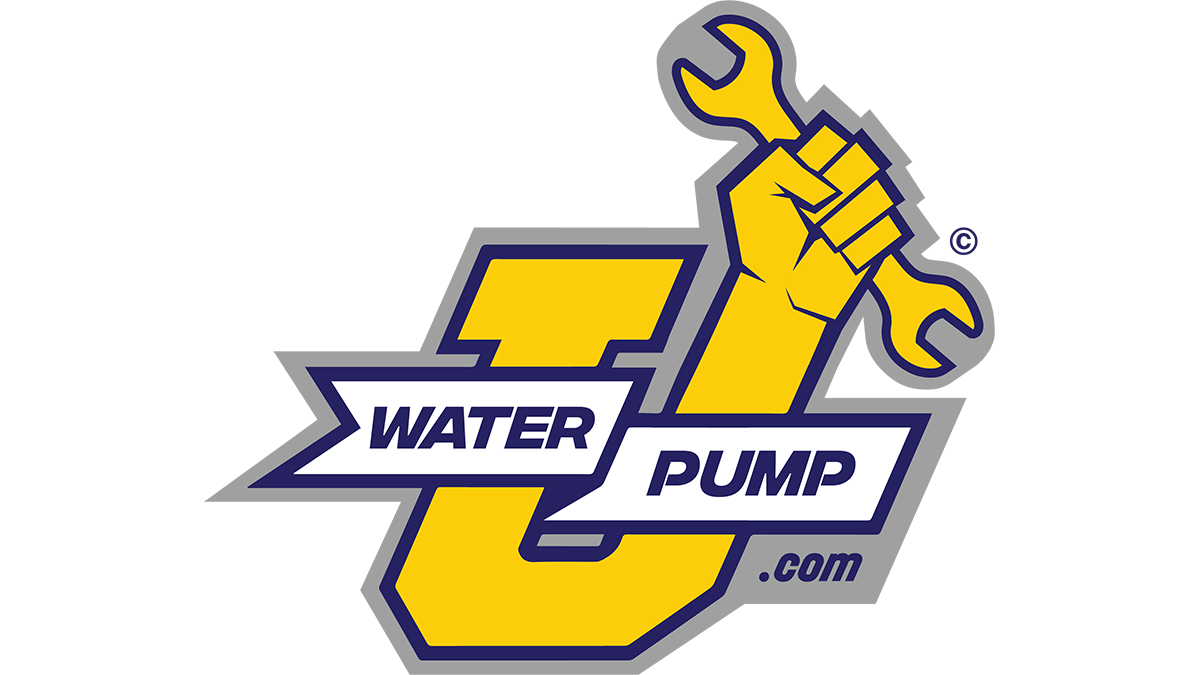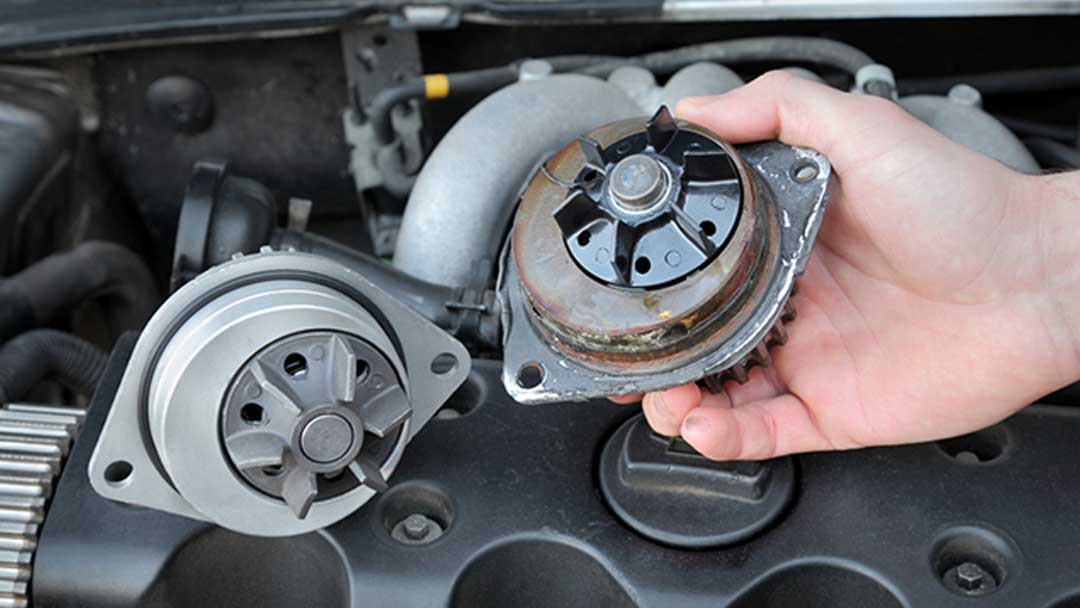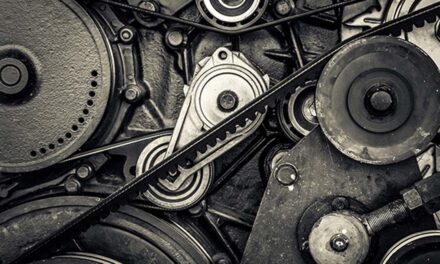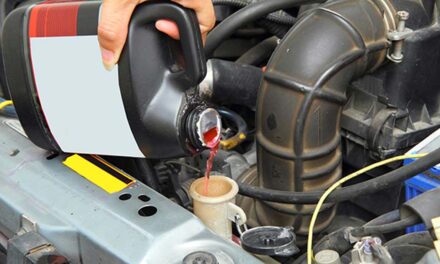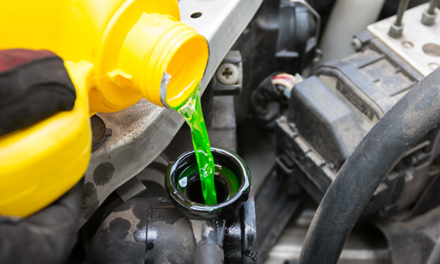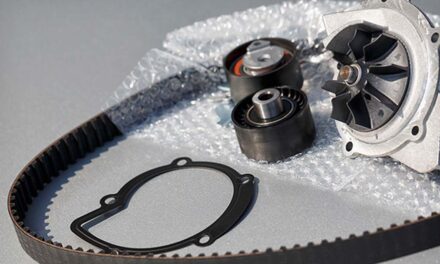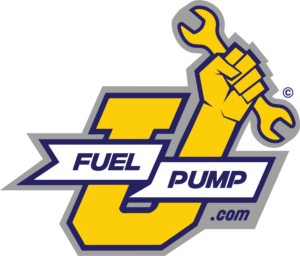All engines, regardless of the type of fuel they use, rely on thermal combustion, which creates a great deal of heat. They are built with a variety of metals including a cast iron or aluminum block and cylinder heads with steel parts in a variety of tensile strengths and densities. All these parts contract when cold and expand at different rates when heated.
As part of the cooling system, the water pump cools engine components, aiding in controlling and limiting the amount of expansion to predetermined levels for a perfect seal. Temperatures are normally limited to 195 to 220 degrees F. A water pump failure would allow an uncontrolled rise in temperature with a subsequent increase in expansion.
The pistons are the quickest to expand and quickly become too large for the cylinders in which they operate. They will freeze in the cylinders with catastrophic consequences.
Associated Cooling System Components
The radiator transfers heat from the engine to the atmosphere. It also has a reservoir within a portion of its tank used to cool the transmission fluid. The reservoir keeps the fluid isolated from the engine coolant.
The thermostat is temperature sensitive, and the spring-operated valve is used to control the flow of coolant returning to the radiator. It’s designed to remain closed, preventing coolant flow from the engine to the radiator until engine temperatures reach predetermined levels. At this point, it fluctuates the amount of opening and coolant flow to maintain the proper engine temperature.
The engine’s cooling fan is another critical component of the system. As the vehicle is in motion, sufficient air is passing through the radiator to transfer engine heat to the atmosphere. When the vehicle stops, so does the air passing through the radiator and the coolant temperature begins to increase. The engine senses this increase through the engine coolant temperature sensor (CTS) and turns on the fan to move air through the radiator and drop the temperature.
Types of Water Pumps
Two types of pumps dominate the industry, both of which are belt driven. The rear-wheel drive vehicle with the engine conventionally mounted with the front of the engine facing the radiator and the transversely mounted engine used in all front-wheel drive vehicles. In both cases, the water pump is located on the front of the engine in all but a few applications.
Conventional engines have the water pump directly above the crankshaft and usually drive the engine’s cooling fan. The coolant travels from the bottom radiator hose to the water pump where the coolant enters close to the center of the impeller.
The pump mounts to the engine block and the coolant is pumped through the block and around the cylinders. From there it travels through the cylinder heads, onto the thermostat, and back to the radiator.
A hose generally connects to the top side of the water pump and passes coolant to the heater core and returns to the intake manifold, close to the thermostat. This type of pump is generally simple to replace.
The second type used on the front-wheel drive vehicles that make up the majority of vehicles on the road today is generally not as simple to replace. Its function remains the same.
In the majority of cases, these pumps are an insert. This means that there is an engine housing into which they install. Today the majority of pumps are driven by the camshaft timing belt.
There are front-wheel drive vehicles that locate the water pump to either side of the timing belt cover and are much easier to replace. Timing belt-driven pumps have a much higher level of difficulty due to the removal of the timing belt to access the pump. Replace both the pump and timing belt at the same time.
How Long Do They Last?
Water pumps last generally as long as the timing belts. Most belts require replacement around 90,000 miles or better. Proper cooling system maintenance to prevent contamination will ensure the longest lifespan for your water pump and related cooling system components.
How to Recognize a Failed Water Pump?
There are several symptoms of a failing water pump.
- Engine temperatures are abnormally high.
- Loss of coolant.
- Unusual rattling noises.
- All water pumps have a “weep hole,” located directly under the pulley, and extends to the bearing. Excessive liquid seeping from the weep hole indicates a failed pump.
- If the fan or pulley rocks back and forth with hand pressure indicates a bad bearing and failed pump.
- Engine coolant seeping out of the bottom of the timing belt cover.
Essential Tips to Protect Against Engine Damage
Remember to check your gauges and pay attention to warning lights! If you see that the vehicle is running hot, shut down the engine before it reaches the point of no return minimizing the chance of damage then have the vehicle towed to a repair facility for further evaluation.
If the engine overheats you should always wait patiently to allow it to cool. Once the engine is cooled, it is necessary to determine what caused the vehicle to overheat in the first place and complete necessary repairs before attempting to drive it again.
